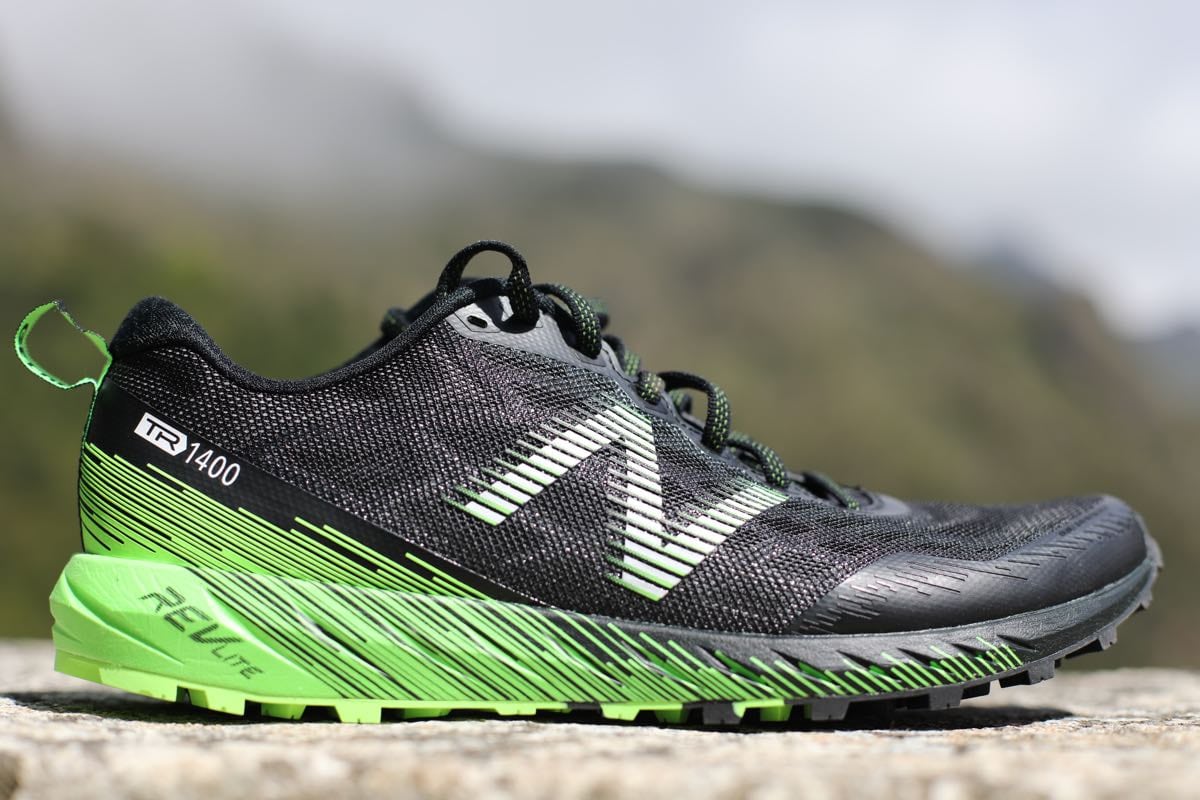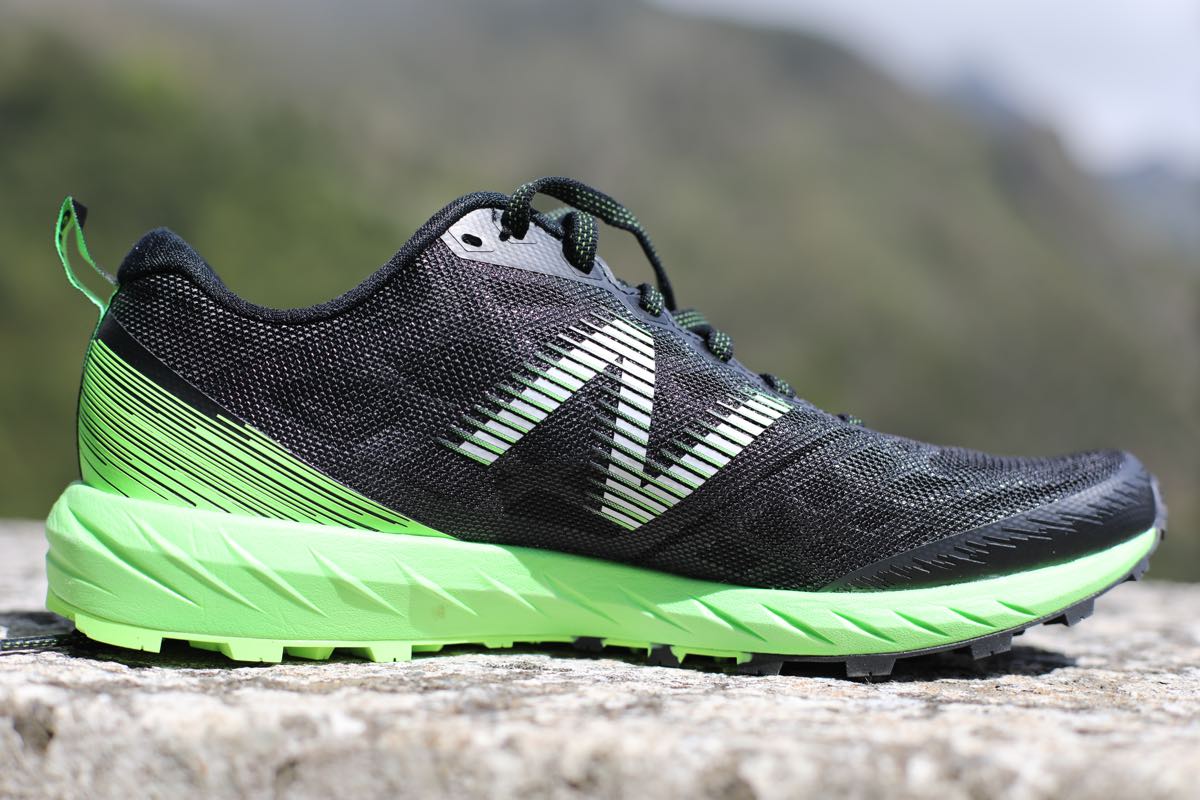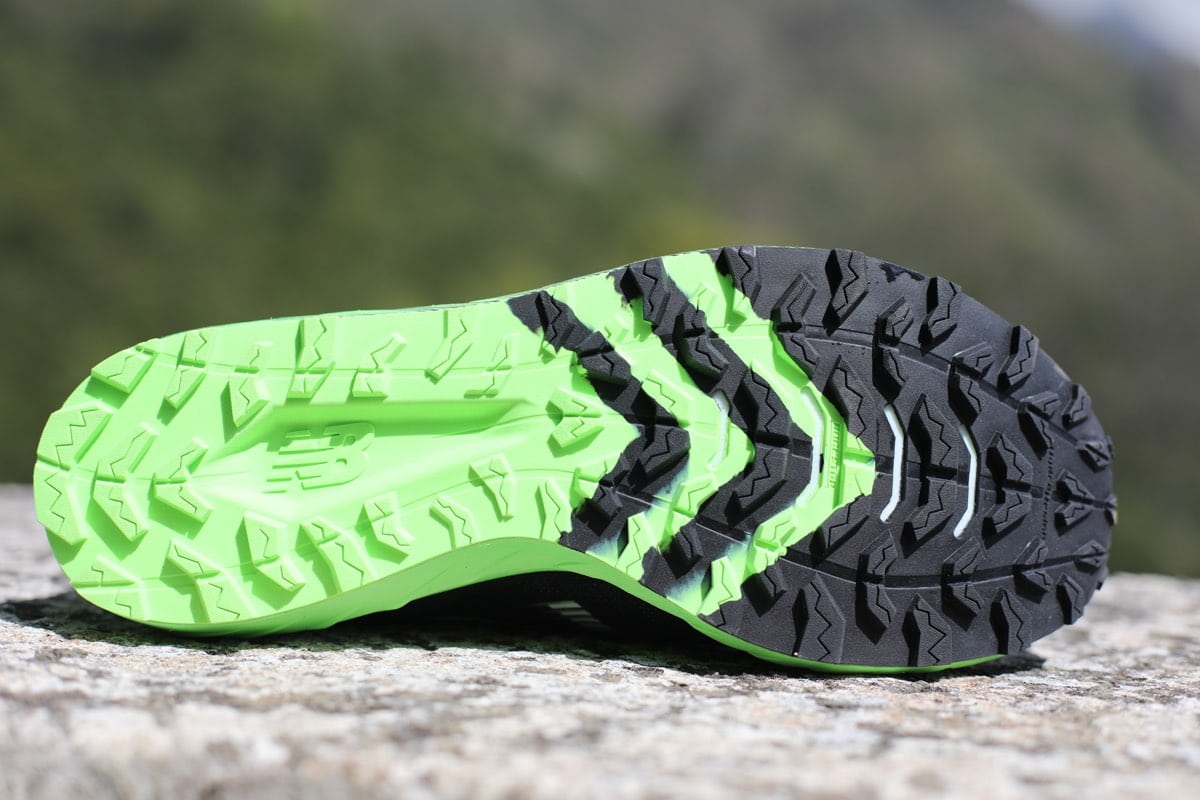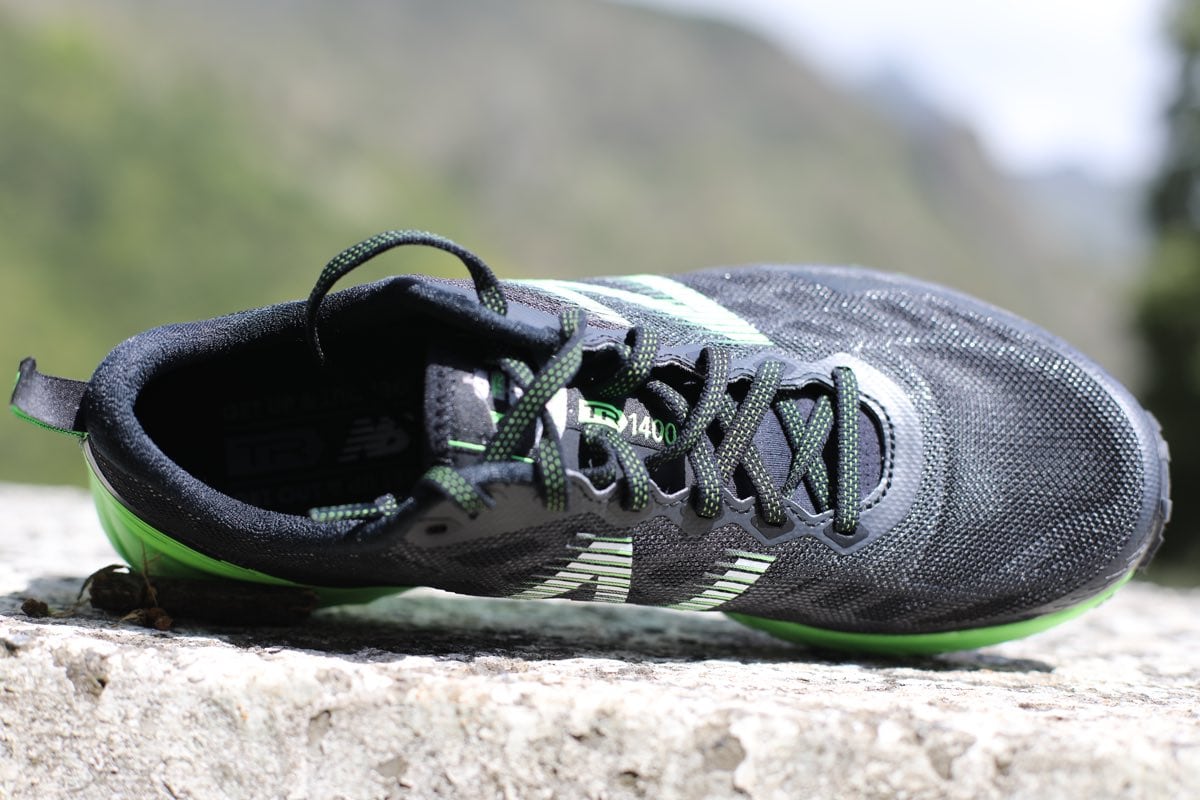Our Favorite Trail Running Shoes
Check out our Best Trail Running Shoes buyer’s guide to learn about our current favorite trail running shoes!
New Balance Summit Unknown Review
Long may we contemplate the age-old questions of cushioning versus ground feel, weight versus durability, fire-engine red versus dull gray. Well, maybe not that last one. I’m as guilty as most in seeing if I can push the least amount of shoe to ultramarathon distances simply because they are fun shoes to run in. Climbing feels somewhat easier and even slow paces feel more effortless when I’m wearing a trail shoe in the sub-nine-ounce range. But it all comes down to how long my feet can take it, and over the last few years we’ve seen trail running shoes trend toward the bulky and heavily lugged. I haven’t found a lightweight trail model in the last few years that I felt could handle ultras, so I defaulted to my standby 11 ouncers. The New Balance Summit Unknown ($110) may be the first trail all arounder in awhile that can do just that.
The New Balance Summit Unknown has its heritage in the now-long-defunct MT101, but on paper this year’s model is a bit of a throwback. The Summit Unknown returns this line of lightweight trail shoes from New Balance to a 10mm heel drop and racing last based on the NB 1400 road flat. In short, the NB-J last on the Summit Unknown is narrow in the heel and midfoot with a moderately wide forefoot. This is similar to the last on the coveted MT110 ‘Air Anton,’ which had the wonderful NL-1 last now only used in the barefoot-specific shoe from New Balance, the MT10. Am I geeking hard enough for you yet?
[Editor’s Note: The photos below are of a nearly identical prototype of the Summit Unknown when it was going by its working name, the TR 1400.]

The New Balance Summit Unknown (in its prototype as the TR1400). All photos iRunFar/Bryon Powell unless otherwise noted.
New Balance Summit Unknown Upper
Borrowing heavily from the open-mesh upper design of the NB 1400 road flat, the Summit Unknown has the same light and airy mesh upper with a number of additions for durability. A welded-on rubberized toecap gives some protection up front, while the same protection is used around the heel cup for additional support and durability. The mesh is dual density with a durable webbing placed between the layers throughout the mid- and forefoot for a locked-down feel. The lacing situation is wide, flat, and stretchy, which doesn’t place much pressure over the absolute nonsense of a tongue, which deserves its own paragraph of disdain.
As best I can tell, New Balance has been trying to create their own version of Salomon’s Endofit since the original Vazee Summit. The first version felt too loose and soaked up too much moisture, and I didn’t try the Vazee Summit v2. With the Summit Unknown, the design team took this gusseted-tongue concept into utterly useless territory as it bunches up and puts pressure on top of the foot approximately one mile into a run. While I understand what New Balance was trying to accomplish with this design, beta testing surely yielded poor results. The problem is that shoes are often on the factory-production schedule during testing, so I’m sure that they received negative feedback on the tongue but couldn’t do anything about it prior to production. In coming to understand shoe design versus production schedules, I’ve developed more empathy for the designers, but in this case, this was a major faux pas.
So, what is the remedy to this glaring blemish on an almost-perfect upper? I cut the gusseted tongue on both sides. I don’t notice it now, but this soft and flexible material continues to slide down underneath the laces. This was an easy work around, but it is annoying given the locked-down fit throughout the rest of the upper. Again, the Summit Unknown has a narrower heel and midfoot and then opens up in the forefoot a bit.
The insole on the Summit Unknown is flimsy, and I have read that wearers complain of the insole bunching up in the shoe when wet. I did not experience this after taking the Summit Unknown through creek crossings, and this shoe drains very well. Also, the Summit Unknown comes in both standard and wide (2E) widths.
New Balance Summit Unknown Midsole
I have long been a fan of REVlite, New Balance’s premier go-fast EVA foam, which functions great as a semi-firm and protective trail cushioning system. If you haven’t run in REVlite in the past, I would place it somewhere between a Nike Kiger/Wildhorse and a Salomon Sense cushioning on the firmness scale. It is a foam that seems to take a long time to feel dead, and after a short break-in period my feet really like it. The total stack height on the Summit Unknown is 27mm to 17mm, including the 4mm lug height.
The REVlite is aided by a forefoot Rock Stop plate, which provides just enough protection on the trail over sharp rocks. I like the rock plate because its enough protection for most trails, and it does seem to provide a little bit of forefoot rigidity for forward propulsion and to delay fatigue in my feet.
New Balance Summit Unknown Outsole
Full disclosure, I did not test this shoe on the flanks of Mordor during an apocalyptic event. Unfortunately, I didn’t test it on a whole lot of mud or clay due to the alarmingly dry spring and summer we’ve had in Colorado. I mostly tested this outsole on decomposed dry granite, which is sometimes loose and annoying, and wet rocks of the same nature. What I can tell you is that the HydroHesion outsole and its 4mm lugs do not wear down quickly. It grips wet rock well, but it’s not a state-of-the art outsole with the level of grippiness of Salomon on wet surfaces. This outsole is a good all arounder, and what is nice is that it works well for road-to-trail and non-technical trails for faster running.
New Balance Summit Unknown Overall Impressions
Bottom line, the New Balance Summit Unknown is a great shoe. In my opinion, this is the only sub-nine-ounce trail shoe (8.7 ounces/men’s size 9) with enough protection for ultramarathons unless you’re under 30 years old and your feet can handle less protection. While the Summit Unknown feels a bit stiff and overly responsive at first, it seems to get a bit softer after a short break-in period. The outsole grips well and the airy mesh both drains water well and breathes well in the heat. Overall, the Summit Unknown is the obvious simple successor for shoes like the MT110 that you can lace up and forget about, and with a price of $110, why not have a pair in your trail quiver?
Call for Comments (from Meghan)
- Have you run in the New Balance Summit Unknown? If so, what do you think about the shoe’s various features?
- Are you a longtime New Balance wearer? Given your understanding of New Balance’s shoe history, what do you think of the Summit Unknown’s place in the lineage?
- Did you have the same problems with the tongue as our tester did?
- What features of the shoe did you think are its best?
[Editor’s Note: If you’re affiliated (i.e., an employee, ambassador, etc.) with a shoe brand, please share your relation in each of your comments on this article. Thanks!]





